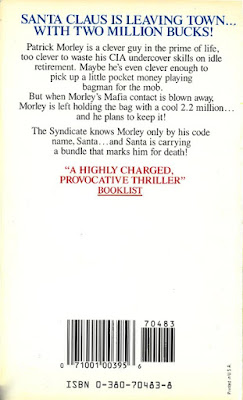Since taking the reins of
Mystery Scene Magazine’s “Short &
Sweet: Short Stories Considered” column a few years ago my reading of short
mystery fiction has increased significantly. During 2018, I read—and this is a
less than scientific estimate—somewhere greater than 500 crime and mystery
short stories. The stories were published in magazines—Alfred Hitchcock, Ellery Queen,
Black Cat, Down & Out—anthologies and collections. The individual stories have
a tendency to slip from my awareness shortly after the final words have been
read, but there are those stories that stick to me. Often becoming something
better and more real in the weeks and months after I’ve read the tale.
This year, for something
a little different, I decided to sit down and compile a list, from memory rather
than going back into the books and magazines or the reviews I wrote, of my five
favorite mystery short stories. And, no matter how hard I tried, I was unable
to settle on less than six stories. So, without further ado, here are my five
six favorite short stories (in no particular order) published during 2018*.
“An
Elderly Lady Seeks Peace at Christmastime” by Helene Tursten, featuring the
homicidal octogenarian Maude, who will do anything for peace and quiet. [An Elderly Lady is Up To No Good, Soho,
November 2018]
“The
Little Men” by Megan Abbott, is a Hollywood story with an ironic and very twisted
ending. [Bibliomysteries Volume Two,
edited by Otto Penzler, Pegasus, August 2018]
“Fair
Game” by Max Gersh, is a carnival tale reminding us that the house always wins. [Alfred Hitchcock Mystery Magazine, March
/ April 2018]
“Backfire” by Floyd Mahannah, is a vintage crime novella that is hardboiled, and perfectly plotted. [The Broken Angel / Backfire and Other Stories, by Floyd Mahannah, Stark House, May 2018]
“Backfire” by Floyd Mahannah, is a vintage crime novella that is hardboiled, and perfectly plotted. [The Broken Angel / Backfire and Other Stories, by Floyd Mahannah, Stark House, May 2018]
“Phantomwise:
1972” by Joyce Carol Oates, is a long story about sexual harassment and murder.
[The Best American Mystery Stories 2018,
edited by Louise Penny & Otto Penzler, Mariner, October 2018]
“The
Wild Side of Life” by James Lee Burke, is an old school paperback era story
about men and women and trouble. [The Best
American Mystery Stories 2018, edited by Louise Penny & Otto Penzler, Mariner,
October 2018]
*A few of the stories were originally published prior to 2018, but reappeared in author collections or best of the year anthologies.








